
Micro & Nano Letters
Scope & Guideline
Connecting ideas in micro and nanoscale research.
Introduction
Aims and Scopes
- Nanomaterials Synthesis and Characterization:
The journal emphasizes the development and characterization of novel nanomaterials, including metal nanoparticles, carbon-based materials, and composites. Research often involves green synthesis methods and their impact on material properties. - Photocatalysis and Electrocatalysis:
A significant focus is placed on photocatalytic and electrocatalytic applications of nanomaterials, particularly for environmental remediation and energy conversion, showcasing innovations in material design and functionality. - Biomedical Applications of Nanomaterials:
The journal publishes studies on the use of nanomaterials in biomedical fields, including drug delivery systems, antibacterial agents, and cancer therapy, highlighting the potential of nanotechnology in health care. - Nanotechnology in Energy Storage and Conversion:
Research related to nanostructures for energy storage devices such as batteries and supercapacitors, as well as photovoltaic applications, is a core area, aiming to improve performance and efficiency. - Microfabrication and MEMS:
Microfabrication techniques and micro-electromechanical systems (MEMS) are also key topics, with studies focusing on innovative designs, fabrication methods, and applications in sensors and actuators. - Environmental Applications of Nanotechnology:
The journal addresses the environmental implications of nanotechnology, including waste treatment and pollution control, emphasizing sustainable practices and the development of eco-friendly materials.
Trending and Emerging
- Green Synthesis of Nanomaterials:
There is a marked increase in studies exploring environmentally friendly methods for synthesizing nanomaterials, highlighting the importance of sustainability and the use of biological templates or extracts in material production. - Smart Drug Delivery Systems:
Innovative approaches to drug delivery using nanocarriers, including responsive systems that can release therapeutic agents on-demand, have gained attention, reflecting advancements in nanomedicine. - Nanomaterials for Energy Applications:
Research focusing on the application of nanomaterials in energy conversion and storage, particularly in battery technology and photocatalysis, is trending, driven by the global push for renewable energy solutions. - Multifunctional Nanocomposites:
The development of multifunctional nanocomposites that combine various properties (e.g., antibacterial, conductive, and catalytic) for enhanced performance in diverse applications is emerging as a significant theme. - Integration of Nanotechnology with Artificial Intelligence:
The intersection of nanotechnology and AI is an emerging area, with studies exploring how machine learning and AI can optimize the design and application of nanomaterials, particularly in drug discovery and materials science.
Declining or Waning
- Traditional Material Characterization Techniques:
There has been a noticeable decline in papers focusing solely on conventional characterization methods for nanomaterials, as the field shifts towards more advanced and hybrid techniques that provide deeper insights into material properties. - Basic Nanoparticle Synthesis without Functionalization:
Research focused on the synthesis of nanoparticles without exploring their functionalization or application has decreased. The trend is moving towards studies that integrate synthesis with specific applications or advanced functionalization techniques. - Nanoelectronics and Semiconductor Devices:
Although still relevant, the number of publications dedicated to traditional nanoelectronics and semiconductor device fabrication has decreased, possibly due to the saturation of research in this area and the emergence of more interdisciplinary applications. - Static Mechanical Properties of Nanomaterials:
There is a waning interest in the static mechanical properties of nanomaterials. Recent publications indicate a shift towards dynamic and application-oriented studies that consider the performance of nanomaterials under real-world conditions.
Similar Journals

MICROSYSTEM TECHNOLOGIES-MICRO-AND NANOSYSTEMS-INFORMATION STORAGE AND PROCESSING SYSTEMS
Fostering collaboration in the evolving landscape of microsystems.MICROSYSTEM TECHNOLOGIES-MICRO-AND NANOSYSTEMS-INFORMATION STORAGE AND PROCESSING SYSTEMS is an esteemed scholarly journal published by SPRINGER HEIDELBERG, bringing together cutting-edge research in the fields of microsystems and nanosystems, with a specific focus on information storage and processing technologies. With its origins tracing back to 1994, this journal has established a solid reputation within the academic community and currently ranks in Q3 across key disciplines, including Condensed Matter Physics and Electrical and Electronic Engineering, as assessed by the 2023 category quartiles. The journal is notable for its contribution to advancing knowledge in Nanoscience and Materials Science, particularly in the domains of electronic, optical, and magnetic materials. As a pivotal resource for researchers, professionals, and students alike, it offers insights into innovative methodologies, applications, and breakthroughs in microsystems technologies that are shaping the future of electronics and computing. While currently not an open-access journal, it maintains a commitment to disseminating significant findings in the rapidly evolving landscape of information processing systems, fostering collaboration and knowledge exchange within the scientific community.
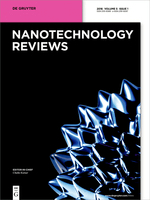
Nanotechnology Reviews
Advancing Knowledge in NanotechnologyNanotechnology Reviews, published by DE GRUYTER POLAND SP Z O O, stands at the forefront of the multidisciplinary field of nanoscience and nanotechnology. With an Open Access model adopted since 2019, this journal, identifiable by its ISSN 2191-9089 and E-ISSN 2191-9097, disseminates vital research that is accessible to a global audience. The journal is located in Germany and has established itself as a premier platform for innovative research, boasting impressive quartile rankings: Q1 across several categories including Biotechnology, Energy Engineering, and Materials Science, as well as a Q2 classification in Biomaterials as of 2023. The diverse scope enables authors to contribute to a range of topics, from biomedical applications to energy solutions and advanced materials, making it essential reading for researchers, professionals, and students passionate about cutting-edge developments. Additionally, with Scopus rankings highlighting its value across various domains and robust percentiles, including 94 in Engineering (miscellaneous), 93 in Medicine (miscellaneous), and 88 in Biotechnology, Nanotechnology Reviews is an influential and respected journal that fosters scientific dialogue and innovation.
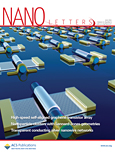
NANO LETTERS
Leading the charge in nanotechnology research.NANO LETTERS is a leading journal, published by the American Chemical Society, that focuses on the rapidly evolving field of nanoscience and nanotechnology. With an impressive impact factor and consistently ranked in the Q1 category across multiple disciplines including Bioengineering, Materials Science, and Condensed Matter Physics, it serves as an essential resource for researchers and professionals aiming to stay at the forefront of nano-related advancements. This journal, available in print and online (ISSN: 1530-6984, E-ISSN: 1530-6992), features cutting-edge research articles that explore the intricate interplay between nanoscale materials and emerging technologies, driving innovation across various sectors. As of 2023, NANO LETTERS holds prestigious rankings, including a top position in several Scopus categories, underscoring its impact within the scientific community. Published continuously since 2001, NANO LETTERS is dedicated to disseminating high-quality research papers that inspire and inform the next generation of scientists and engineers.
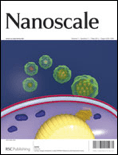
Nanoscale
Advancing the Frontiers of Nanoscience.Nanoscale is a premier academic journal published by the Royal Society of Chemistry, dedicated to advancing the field of nanoscience and nanotechnology. With both its ISSN (2040-3364) and E-ISSN (2040-3372) ensuring wide accessibility, the journal is renowned for its high-impact research contributions, reflected in its impressive 2023 Impact Factor and prestigious Q1 ranking in both Materials Science (Miscellaneous) and Nanoscience and Nanotechnology categories. Since its inception in 2009, Nanoscale has fostered a collaborative platform where leading researchers from around the globe share their innovative findings across a multitude of topics spanning from material synthesis to applications in nanotechnology. The journal not only serves as a valuable resource for professionals, researchers, and students but also actively engages the academic community in discussing emerging trends, thus shaping the future of nanoscience. Situated in the heart of the UK at Thomas Graham House, Science Park, Milton Rd, Cambridge CB4 0WF, Nanoscale remains a key publication for those looking to keep abreast of the latest breakthroughs in an ever-evolving field.

Nano Hybrids and Composites
Advancing Innovation in Nano TechnologyNano Hybrids and Composites, an esteemed journal published by TRANS TECH PUBLICATIONS LTD, serves as a pivotal platform for the dissemination of groundbreaking research in the field of nanotechnology and materials science. With an ISSN of 2297-3370 and E-ISSN of 2297-3400, this journal aims to provide comprehensive insights into the development and application of nano-hybrid materials and composites, exploring their innovative uses across various industries. The journal is particularly distinguished for its commitment to Open Access, enabling unrestricted access to high-quality research findings that influence both academia and industry. Researchers, professionals, and students are encouraged to contribute to and engage with the vast array of topics covered, as the journal not only enhances the scientific discourse but also fosters collaboration and advancement in this rapidly evolving field.

Journal of Nanostructure in Chemistry
Unveiling the Potential of Nanoscale InnovationsThe Journal of Nanostructure in Chemistry, published by Springer Heidelberg, stands at the forefront of nanotechnology and its applications in the field of chemistry. With an impressive Q1 ranking in Chemistry (Miscellaneous) as of 2023, this journal offers a platform for disseminating groundbreaking research and innovative practices that shape the future of nanostructured materials. Recognized among the top-tier publications in its category—with a commendable 96th percentile ranking in Scopus—this journal provides researchers, professionals, and students alike with invaluable insights into the intricate interplay between nanoscale structures and chemical principles. Despite being a non-open access platform, its commitment to high-quality, peer-reviewed content continues to drive scientific discourse and collaboration within the international research community. The Journal of Nanostructure in Chemistry, which spans from 2013 to 2024, is dedicated to advancing knowledge and fostering innovation in nanochemistry, making it an essential resource for anyone looking to stay ahead in this rapidly evolving discipline.
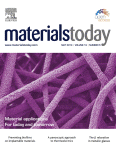
Materials Today
Illuminating the Future of Materials ScienceMaterials Today is a premier academic journal published by Elsevier Science Ltd, specializing in the dynamic fields of materials science, mechanical engineering, and condensed matter physics. Established in 1999, the journal has garnered an enviable reputation, consistently ranking in the Q1 category across multiple disciplines including mechanics of materials and general materials science, reflecting its influence and high-quality research output. With an impressive Scopus ranking—4th in both mechanical engineering and mechanics of materials, and 6th in condensed matter physics—Materials Today serves as an essential resource for researchers, professionals, and students seeking to stay at the forefront of developments in material innovations and applications. The journal is known for its commitment to publishing significant research findings and reviews, making it a vital platform for disseminating knowledge and fostering collaboration in the rapidly evolving materials field. Although it does not offer open access, its robust impact factor underscores the importance of the content published, ensuring wide visibility and citation among the academic community. Explore the rich tapestry of materials research with Materials Today, where groundbreaking insights pave the way for future technological advancements.
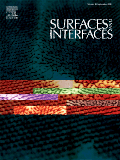
Surfaces and Interfaces
Bridging Science and Technology at the Surface LevelSurfaces and Interfaces is a leading international journal published by Elsevier, dedicated to advancing the understanding of surface and interfacial phenomena across various disciplines, including chemistry, materials science, and physics. With an impressive impact factor placing it in the Q1 quartile for its categories as of 2023—spanning Chemistry, Condensed Matter Physics, and Surfaces, Coatings, and Films—this journal not only serves as a critical platform for innovative research but also reflects the dynamic nature of surface science in contemporary applications. The journal is indexed in Scopus, ranking 25th out of 132 in the Materials Science – Surfaces, Coatings and Films category, marking it in the top 19% of this prestigious field. Although it is not an open-access platform, the journal remains a vital source of curated academic material for researchers, professionals, and students seeking to deepen their knowledge and contribute to ongoing conversations in surface and interface science. Published from the heart of Europe in Amsterdam, Surfaces and Interfaces invites submissions that challenge conventional paradigms and explore the forefront of technology and materials.
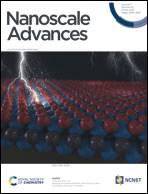
Nanoscale Advances
Leading the Charge in Nanoscience Advancements.Nanoscale Advances, published by the Royal Society of Chemistry, stands out as a leading open-access journal dedicated to advancing the field of nanoscience and nanotechnology since its inception in 2018. With a specialized focus on areas such as atomic and molecular physics, bioengineering, chemistry, and materials science, this journal has consistently achieved top-tier rankings across several categories, reflecting its high-impact contribution to research and innovation. Currently classified in the Q1 quartile for both Atomic and Molecular Physics and Chemistry (Miscellaneous), and Q2 for Bioengineering, its prestige is underscored by impressive Scopus rankings, including a notable 34th position in General Engineering. With its commitment to disseminating high-quality research, Nanoscale Advances serves as an invaluable resource for researchers, professionals, and students alike, fostering collaboration and scholarly exchange in the rapidly evolving landscape of nanotechnology.

Journal of Inorganic and Organometallic Polymers and Materials
Fostering Innovation in Polymer and Materials ResearchThe Journal of Inorganic and Organometallic Polymers and Materials, published by SPRINGER, is a premier academic journal dedicated to advancing the field of materials science, particularly in the domains of inorganic and organometallic polymers. Established in 1996, this journal has successfully converged multiple years of research, reflecting the dynamic evolution of the field through to 2024. With an impressive Scopus Rank placing it in the top 81st percentile in both Materials Chemistry and Polymers and Plastics, it is recognized for its significant contributions and innovations. The journal is classified in the prestigious Q2 Category, indicating its influence and relevance among leading publications. While it operates under a subscription model, the journal is committed to disseminating cutting-edge research, providing insights that empower researchers, professionals, and students to push the boundaries of materials chemistry and polymer science. Its focus on high-quality, peer-reviewed articles ensures that readers are equipped with the latest findings and methodologies that drive this exciting and rapidly evolving field.